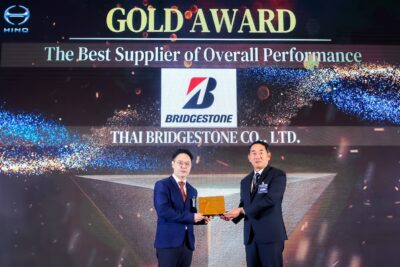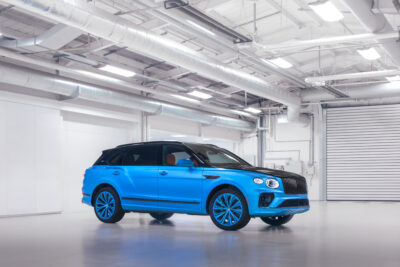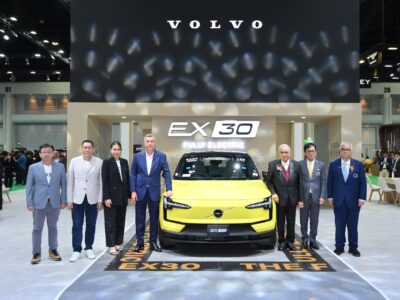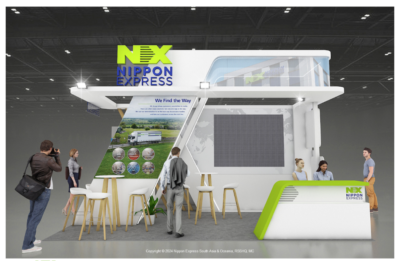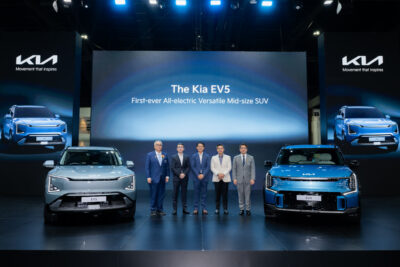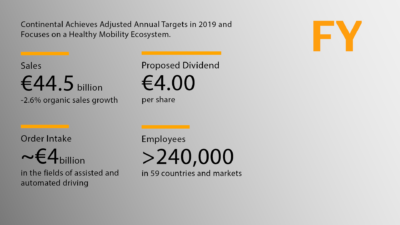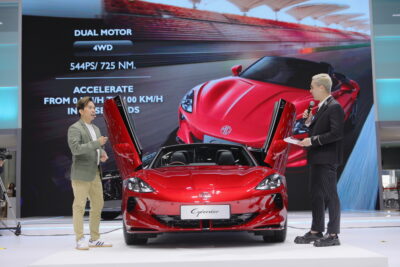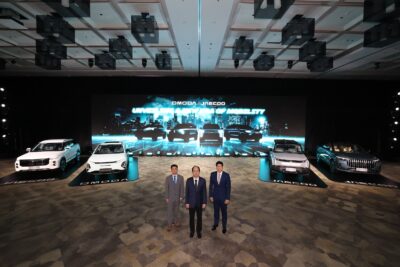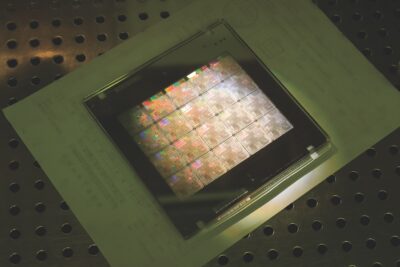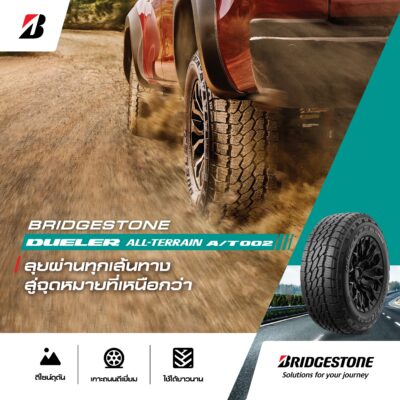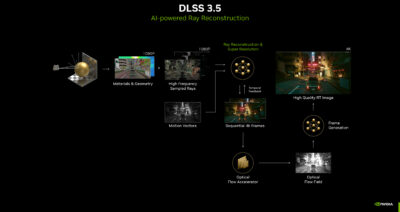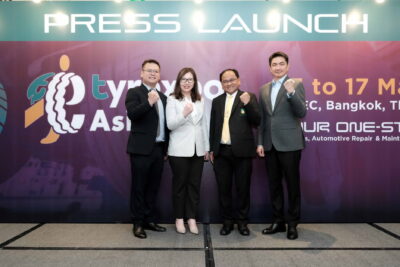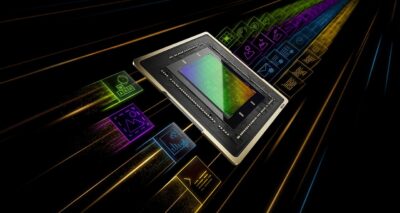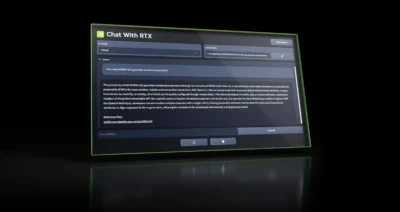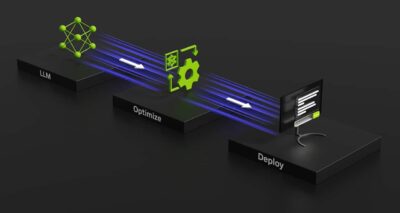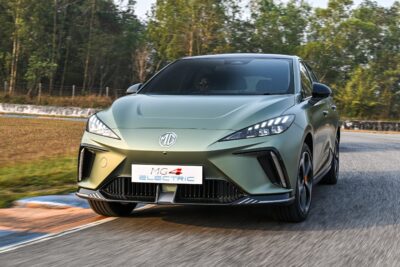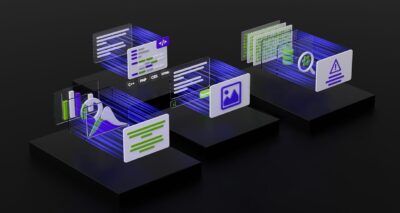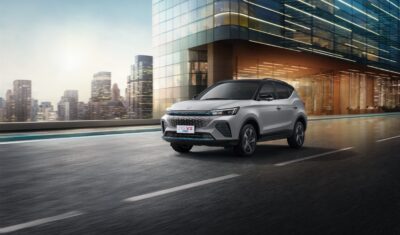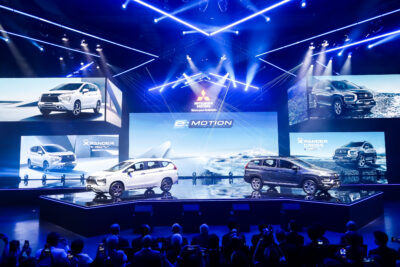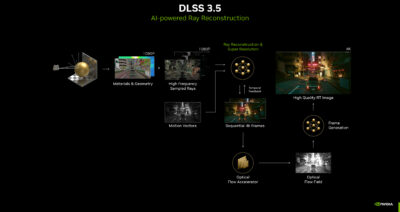• The sixth generation has been created as a modular system: with less complexity allowing for potential expenditure and cost savings while simultaneously increasing performance.
• Improved object detection thanks to higher resolution, range, availability and responsivity.
• Surround Radar specially designed for 360 degrees environmental detection with a range of around 200 meters.
• Long-range radar covers predictive applications for NCAP requirements up to automated driving functions.
Frankfurt am Main, Germany, April 14, 2021. For Continental, radar sensors have been a success story for more than 20 years. In that time, the technology company has launched a total of more than 100 million radar sensors on the market worldwide. And development continues: At Auto Shanghai, Continental will be presenting the sixth generation of long-range radar and surround radar. Production is scheduled to start in 2023 and initial customer orders have already been received. Both radar sensors share a software and hardware platform, reducing complexity and thus costs. Testing and development efforts on the customer side are also reduced. Performance is again significantly increased compared to the fifth generation. As a scalable solution, the radars cover a range of applications: from Euro NCAP requirements in an entry-level variant to the implementation of functions for higher levels of automation, such as automated lane change, in a premium variant. The sensors can also be used to cover the requirements of the General Safety Regulation (GSR). Moreover, the radars also support a range of vehicle architectures and types through their availability as smart radar, with data processing in the sensor and as satellite radar, with the processing of data in a central control unit.
“Radar sensors are a cornerstone of driving safety. In the future, they will provide reliable data in increasingly challenging traffic situations. This includes, for example, autonomous emergency braking for crossing traffic at intersections and the early detection of motorized cyclists, which Euro NCAP will also be testing in the future and which is important for automated lane changes,” explains Frank Petznick, head of the Advanced Driver Assistance Systems business unit at Continental. “With the sixth generation of our radar sensors, drivers will be even safer and more comfortable on the road in the future.”

Long-range radar covers predictive applications for NCAP requirements up to automated driving functions.
In addition to the development of long-range radar with a range of around 250 meters, the designs also focus on 360 degrees environmental detection. With a range of around 200 meters, these future surround radars have significantly greater range than previous short-range radars, thereby laying the foundations for excellent results in future NCAP assessments of assistance systems. Thanks to greater responsivity, surround radars detect objects such as crossing vehicles, motorcycles and cyclists earlier and more precisely. Even when located in particularly difficult installation positions in the vehicle. Especially for the areas on the side of the vehicle, surround radars have features that make both advanced driver assistance systems and automated driving more powerful.
Mastering the challenges of 360 degrees environmental detection
To ensure reliable all-round monitoring of the vehicle’s surroundings using radar technology, radars must be placed at the front and rear corners of the vehicle, behind the painted bumpers. This is a challenge in terms of sensor technology, as reflection and absorption effects on the bumper structure and coating can affect radar signals. The long-range radar in the middle of the vehicle front therefore has a protective cover, a so-called radome, made of radio wave-permeable plastic over the sensor. “This does not work at the vehicle’s corners, but at the same time, the requirements for resolution and range for object detection are increasing,” says Norbert Hammerschmidt, head of Program Management Radar at the Advanced Driver Assistance Systems business unit.

The surround radars detect objects such as crossing vehicles, motorcycles and cyclists early and precisely.
Several patent-pending solutions increase the responsivity of the radar sensors, which means that despite damping by painted bumpers at the corners, greater detection reliability is available. In addition, the new sensors with dimensions of just around 70 x 55 x 20 millimeters (without plug connector and holder) are almost 40 percent more compact than the fifth generation. This opens up new integration options, for example in the vehicle sill, for implementation of a side radar. “In general, with the sixth generation, we are also improving the initial conditions for installing radar sensors in the vehicle,” says Hammerschmidt. “Scaling in multiple power levels allows a wide range of vehicle segments to be covered with the ASIL-B-compliant platform within a sensor series.” The new surround range and long-range radars work at 77 GHz as standard but are prepared for the band between 77 and 81 GHz and consequently offer the advantages of a larger frequency band. Thanks to intelligent algorithms, radars in road traffic also filter out signals from other radar sensors – an important issue with increasing equipment rates – and process only their own signals.

Long-range radar and surround radar share a software and hardware platform.
Adding strengths – retaining the tried-and-tested
Tried-and-tested properties of the current fifth generation of radar sensors have also been retained in the sixth generation. These include the modular and scalable hardware and software, which allows the sensors to be integrated equally into different E/E architectures with more or less local sensor intelligence. The scope of functions also includes auto-alignment for correcting a suboptimal sensor alignment.
Continental develops pioneering technologies and services for sustainable and connected mobility of people and their goods. Founded in 1871, the technology company offers safe, efficient, intelligent, and affordable solutions for vehicles, machines, traffic and transportation. Continental generated preliminary sales of €37.7 billion in 2020 and currently employs more than 235,000 people in 58 countries and markets. In 2021, the company celebrates its 150th anniversary.
The Autonomous Mobility and Safety business area develops, produces and integrates active and passive safety technologies and controls vehicle dynamics. The product portfolio ranges from electronic and hydraulic brake and chassis control systems to sensors, advanced driver assistance systems, airbag electronics and sensorics as well as electronic air suspension systems all the way to windscreen washer systems and headlight cleaning nozzles. The focus lies on a high level of systems expertise and the networking of individual components. In this way, products and system functions are created along the SensePlanAct chain of effects. These make driving safer and easier and pave the way for autonomous mobility.
• The sixth generation has been created as a modular system: with less complexity allowing for potential expenditure and cost savings while simultaneously increasing performance.
• Improved object detection thanks to higher resolution, range, availability and responsivity.
• Surround Radar specially designed for 360 degrees environmental detection with a range of around 200 meters.
• Long-range radar covers predictive applications for NCAP requirements up to automated driving functions.
Frankfurt am Main, Germany, April 14, 2021. For Continental, radar sensors have been a success story for more than 20 years. In that time, the technology company has launched a total of more than 100 million radar sensors on the market worldwide. And development continues: At Auto Shanghai, Continental will be presenting the sixth generation of long-range radar and surround radar. Production is scheduled to start in 2023 and initial customer orders have already been received. Both radar sensors share a software and hardware platform, reducing complexity and thus costs. Testing and development efforts on the customer side are also reduced. Performance is again significantly increased compared to the fifth generation. As a scalable solution, the radars cover a range of applications: from Euro NCAP requirements in an entry-level variant to the implementation of functions for higher levels of automation, such as automated lane change, in a premium variant. The sensors can also be used to cover the requirements of the General Safety Regulation (GSR). Moreover, the radars also support a range of vehicle architectures and types through their availability as smart radar, with data processing in the sensor and as satellite radar, with the processing of data in a central control unit.
“Radar sensors are a cornerstone of driving safety. In the future, they will provide reliable data in increasingly challenging traffic situations. This includes, for example, autonomous emergency braking for crossing traffic at intersections and the early detection of motorized cyclists, which Euro NCAP will also be testing in the future and which is important for automated lane changes,” explains Frank Petznick, head of the Advanced Driver Assistance Systems business unit at Continental. “With the sixth generation of our radar sensors, drivers will be even safer and more comfortable on the road in the future.”

Long-range radar covers predictive applications for NCAP requirements up to automated driving functions.
In addition to the development of long-range radar with a range of around 250 meters, the designs also focus on 360 degrees environmental detection. With a range of around 200 meters, these future surround radars have significantly greater range than previous short-range radars, thereby laying the foundations for excellent results in future NCAP assessments of assistance systems. Thanks to greater responsivity, surround radars detect objects such as crossing vehicles, motorcycles and cyclists earlier and more precisely. Even when located in particularly difficult installation positions in the vehicle. Especially for the areas on the side of the vehicle, surround radars have features that make both advanced driver assistance systems and automated driving more powerful.
Mastering the challenges of 360 degrees environmental detection
To ensure reliable all-round monitoring of the vehicle’s surroundings using radar technology, radars must be placed at the front and rear corners of the vehicle, behind the painted bumpers. This is a challenge in terms of sensor technology, as reflection and absorption effects on the bumper structure and coating can affect radar signals. The long-range radar in the middle of the vehicle front therefore has a protective cover, a so-called radome, made of radio wave-permeable plastic over the sensor. “This does not work at the vehicle’s corners, but at the same time, the requirements for resolution and range for object detection are increasing,” says Norbert Hammerschmidt, head of Program Management Radar at the Advanced Driver Assistance Systems business unit.

The surround radars detect objects such as crossing vehicles, motorcycles and cyclists early and precisely.
Several patent-pending solutions increase the responsivity of the radar sensors, which means that despite damping by painted bumpers at the corners, greater detection reliability is available. In addition, the new sensors with dimensions of just around 70 x 55 x 20 millimeters (without plug connector and holder) are almost 40 percent more compact than the fifth generation. This opens up new integration options, for example in the vehicle sill, for implementation of a side radar. “In general, with the sixth generation, we are also improving the initial conditions for installing radar sensors in the vehicle,” says Hammerschmidt. “Scaling in multiple power levels allows a wide range of vehicle segments to be covered with the ASIL-B-compliant platform within a sensor series.” The new surround range and long-range radars work at 77 GHz as standard but are prepared for the band between 77 and 81 GHz and consequently offer the advantages of a larger frequency band. Thanks to intelligent algorithms, radars in road traffic also filter out signals from other radar sensors – an important issue with increasing equipment rates – and process only their own signals.

Long-range radar and surround radar share a software and hardware platform.
Adding strengths – retaining the tried-and-tested
Tried-and-tested properties of the current fifth generation of radar sensors have also been retained in the sixth generation. These include the modular and scalable hardware and software, which allows the sensors to be integrated equally into different E/E architectures with more or less local sensor intelligence. The scope of functions also includes auto-alignment for correcting a suboptimal sensor alignment.
Continental develops pioneering technologies and services for sustainable and connected mobility of people and their goods. Founded in 1871, the technology company offers safe, efficient, intelligent, and affordable solutions for vehicles, machines, traffic and transportation. Continental generated preliminary sales of €37.7 billion in 2020 and currently employs more than 235,000 people in 58 countries and markets. In 2021, the company celebrates its 150th anniversary.
The Autonomous Mobility and Safety business area develops, produces and integrates active and passive safety technologies and controls vehicle dynamics. The product portfolio ranges from electronic and hydraulic brake and chassis control systems to sensors, advanced driver assistance systems, airbag electronics and sensorics as well as electronic air suspension systems all the way to windscreen washer systems and headlight cleaning nozzles. The focus lies on a high level of systems expertise and the networking of individual components. In this way, products and system functions are created along the SensePlanAct chain of effects. These make driving safer and easier and pave the way for autonomous mobility.


